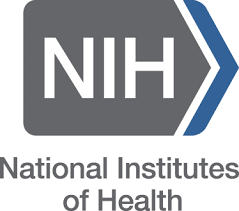by Richard Gunderman, Law & Liberty, April 1, 2025.
Excerpt:
But still, I never suspected outright fraud. It is true that the Lancet, another of the most respected medical journals, had published, with harmful effects in practice, a now infamous paper supposedly linking the measles, mumps, and rubella (German measles) vaccine with the development of childhood autism, but such gross cases of editorial negligence and scientific dishonesty were rare—or so I thought.
Relatively recently, however, it has been discovered that a very high percentage of scientific studies are unreproducible, and a smaller but still significant number are outright fraudulent. There are now scientists dedicated to searching out deficient or dishonest scientific papers, and there is an excellent website, Retraction Watch, similarly dedicated. Its investigations often lead to retraction, the signaling that a paper is so seriously flawed that its results or conclusions can no longer be relied upon and should, for preference, not be quoted.
by Zachary Caverly, Reason, April 1, 2025.
Excerpt:
U.S. biomedical science in the era before the NIH was spreading federal money was not hurting for private support, and while some insist that increased government spending only strengthened a good foundation, the public sector’s role is often overstated regarding some canonical research achievements. The Human Genome Project is a good example. The NIH correctly asserts this groundbreaking international collaboration “changed the face of the scientific workforce,” but it was only made possible by the automatic gene sequencer developed by Leroy Hood, who noted the invention received “some of the worst scores the NIH had ever given.”
It was only through the generosity of Sol Price—the founder of warehouse superstores—that the technology came to fruition and the human genome was finally sequenced. Similar stories of private generosity in place of government grants can be found forstem cell research.
As for the importance of publicly supported academics, consider the story of mRNA vaccine development. The NIH timeline implies that smart government investment into years of HIV research was the key to this lifesaving technology, but the chief innovator of the eventual product, Katalin Karikó, was roadblocked for years in academia and even demoted for her lack of grant acquisition. She would later leave the university setting and work for BioNTech in the private sector to create the Pfizer vaccine. Her story is conspicuously absent from the NIH timeline of events.
by Ronald Bailey, Reason, April 1, 2025.
Excerpt:
A federal district court has struck a blow for medical innovation and patient empowerment by overruling the Food and Drug Administration’s (FDA) misbegotten effort to regulate laboratory-developed (LDTs) and in vitro testing.
LDTs are diagnostic in vitro tests for clinical use that are designed, manufactured, and performed by individual laboratories. They can diagnose illnesses and guide treatments by detecting relevant biomarkers in saliva, blood, or tissues; the tests can identify small molecules, proteins, RNA, DNA, cells, and pathogens. For example, some assess the risks of developing Alzheimer’s disease, detect the presence of cancers, or guide the treatment of breast cancer.
Last May, the agency adopted extensive new rules aimed at regulating those tests for the first time. This is the same agency whose bureaucratic acumen in 2020 massively screwed up COVID-19 diagnostic testing as the pandemic rolled in.
As I reported at the time, out of the billions of tests given annually, the FDA sought to justify imposing its burdensome oversight by citing problematic medical device reports and unconfirmed “allegations” for a grand total of nine and four different tests respectively between 2009 and 2023. The remaining examples cited by the FDA are tests that had actually been submitted to the agency for analysis and were subsequently rejected or revised as recommended.
Excerpt:
The 2025 EdChoice Friedman Index is a comprehensive and easy-to-understand measure of the availability of private K–12 educational choice across the United States. Inspired by Milton and Rose Friedman’s vision of universal choice, the index assesses how well each state enables families to direct education funding toward the options they deem best, whether public or private.
Since 2020, there has been a rapid increase in educational choice programs across the U.S. Fourteen states have been labeled as offering “universal choice,” but many of these states lack accessibility due to caps on funding. The EdChoice Friedman Index measures how much educational choice families really have.
Note: The absence of anything on Trump’s tariffs does not imply agreement. Rather, various other economists are handling this very well and it’s not hard for readers of this blog to find such coverage, both on EconLog and elsewhere. I will have more coverage in the next week, though.











